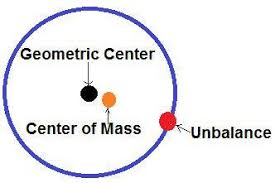A good rule of thumb is start with a small weight. If you don’t get either a 30% change in amplitude, or a 30 degree change in phase – double the weight. Continue doubling until the required change in phase or amplitude is measured.

A trial weight is used to make a change in the original vibration amount and direction. Changing either the AMOUNT of vibration (amplitude), or the DIRECTION of vibration (phase angle) is necessary for the balancing tool to calculate the correction weight amount and location. While many opinions exist, we recommend that the trial weight should change EITHER:
- The vibration amplitude by at least 30% (up or down),
- The phase angle by at least 30%.
Only one of these is required, but it is fine if both change. Simple enough! But the amount of trial weight must be enough to make the change, but not so much that it could cause damage to the machine.
THINGS TO CONSIDER WHEN SELECTING A TRIAL WEIGHT
- The speed of the rotor. The faster the speed, the more influence the trial weight will have on the rotor.
- The amount of the weight.
- The location of the weight from the radius of the rotor’s shaft centerline. The farther from the centerline, the more influence the trial weight imparts to the rotor.
METHODS TO CALCULATE A TRIAL WEIGHT
- By experience, from balancing similar machines.
- Going by previous balancing weight amounts. If you have historical data, you can calculate the needed trial weight. As an example – if the rotor was vibrating at .5 inches per second, and a 2-ounce weight brought the vibration down to .1 IPS, you can calculate the influence coefficient.
2 oz/.4 IPS reduction = .5 oz per .1 IPS.
If the fan is vibrating at .6 IPS, you would know that a 2 oz. weight would either reduce the
vibration to .2IPS (best case), or increase it to 1.0 IPS (worst case).
- Calculating a trial weight mathematically requires knowing the rotor weight and speed. Generally, a trial weight is calculated to generate a centrifugal force equal to 10% of the rotor’s weight. There are several different, but similar, formulas to calculate this, as well as programs and software which can do it for you. If you want to know the math, contact us. It’s requires a bit more than a one-page overview of trial weights.
- The easiest way is to use a little common sense. If balancing a fast, lightweight squirrel cage fan, only a slight amount of weight is needed. If balancing a massive, slow fan, it could take quite a bit of weight.











